Sustained Yield Definition
- (noun) : harvesting at a rate that is in balance with, and does not exceed, the growth rate of the forest.
- (noun) : production of a biological resource (such as timber or fish) under management procedures which ensure replacement of the part harvested by regrowth or reproduction before another harvest occurs.
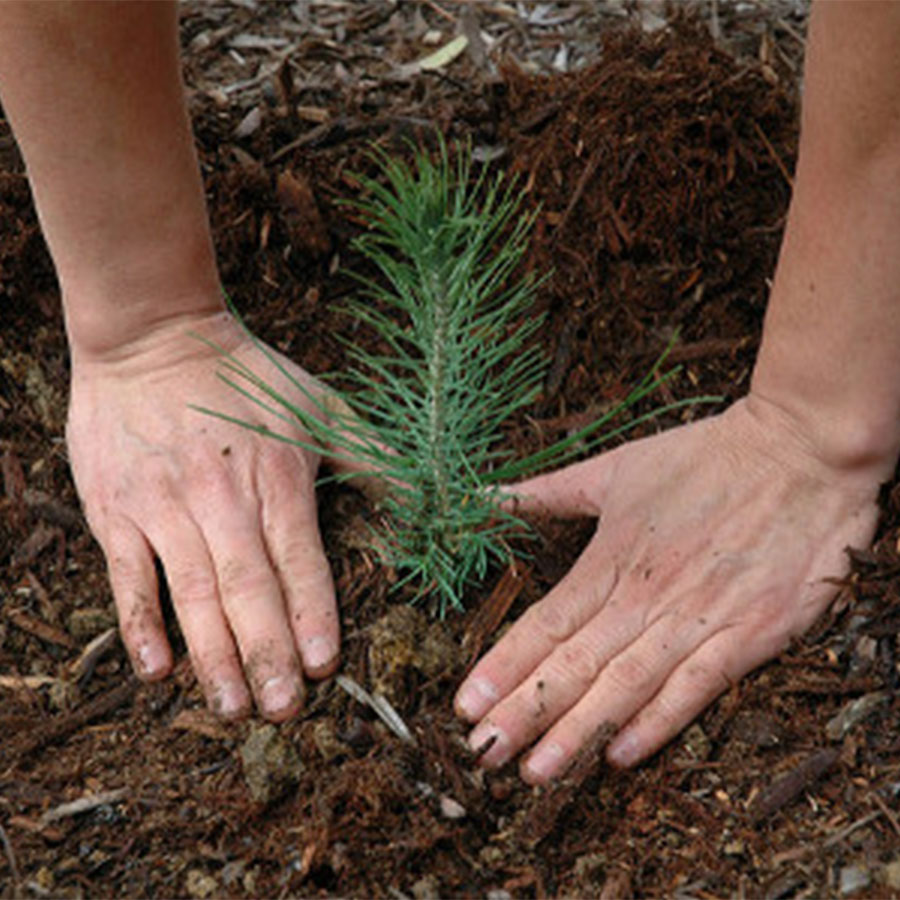
Planting
On average three trees are planted for every tree harvested. That means during planting season, there are roughly 400 trees per acre planted to replace those harvested.
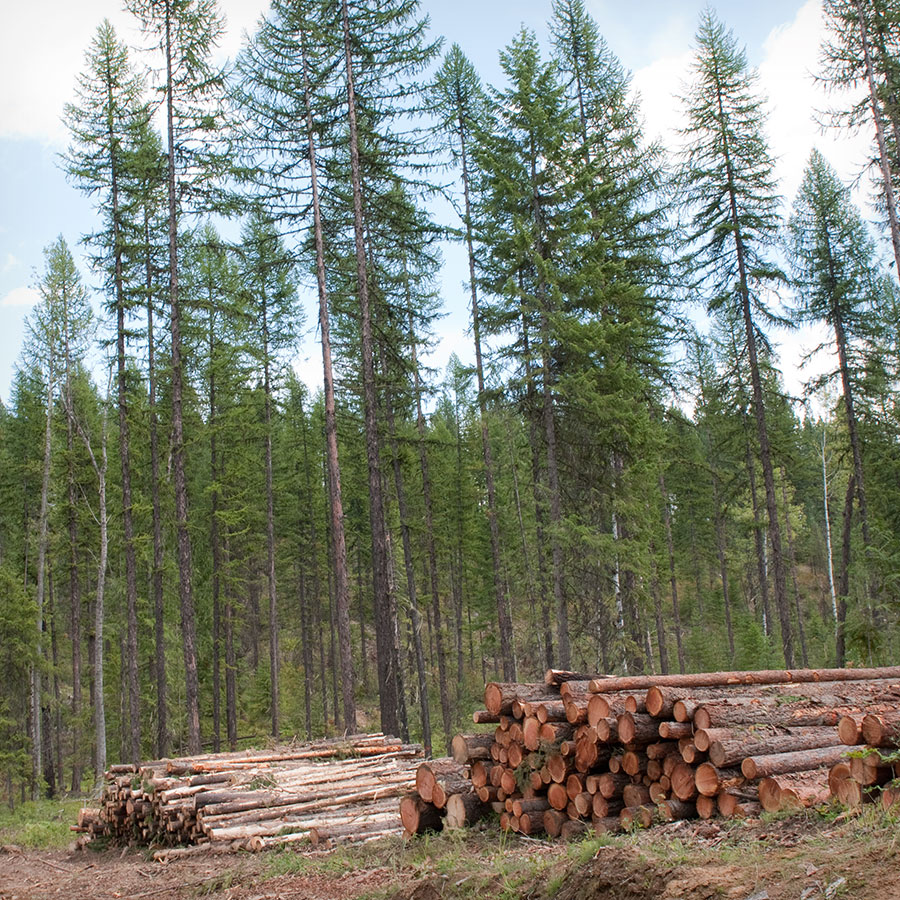
Managing
Tending those new trees takes time, care, and expertise. Controlling competing vegetation, thinning, and surveying for insects and disease are all part of the work of sustainable forestry. Commercial thinning is typically down as a silvicultural treatment that also generates revenue and volume for the marketplace.

Harvesting
Harvesting is part of the sustainable management of working forest. Variable Retention regeneration harvests are conducted to mimic the stand replacement that would naturally occur. Creating a economic return for the beneficiaries. Harvest sets the stage to repeat the cycle of planting – managing – harvesting.
Sustained Yield Management Cycle or Rotation
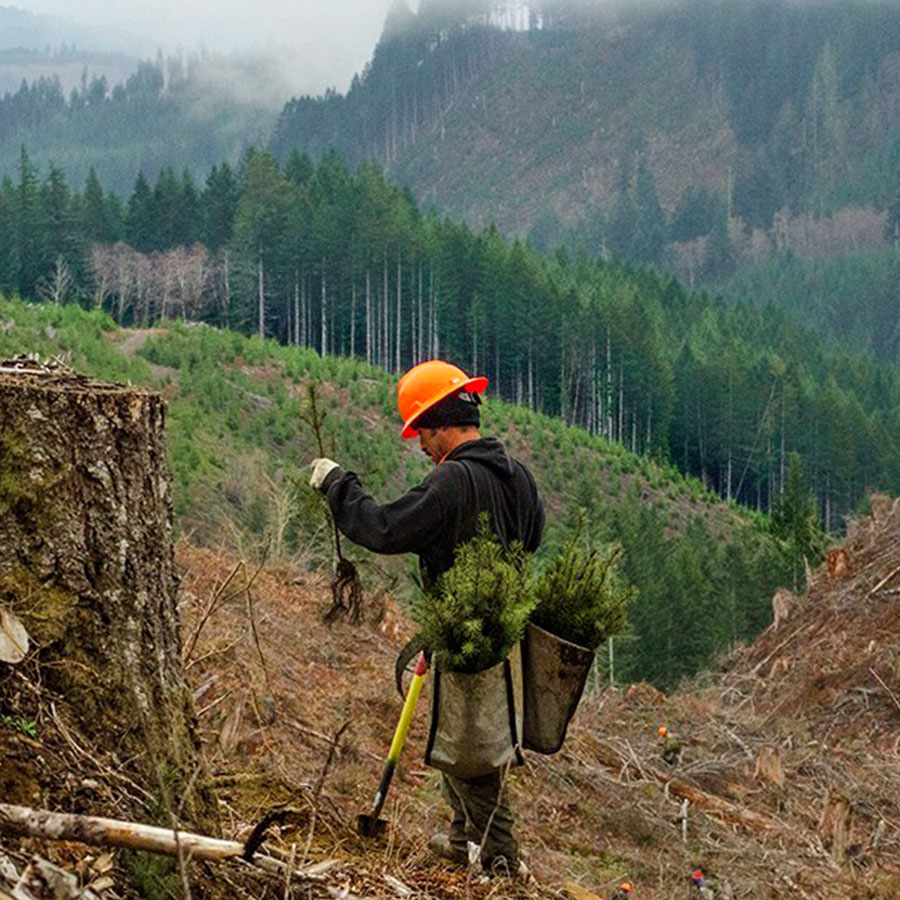
Planting
Not just the law (RCW 76.09.070) but good business as well. Planting after harvest accelerates the growth of the next harvest cycle and ultimately the flow of revenue over time. Between planting and pre-commercial thinning the area is an early seral condition providing habitat for a broad range of animals that use this habitat.
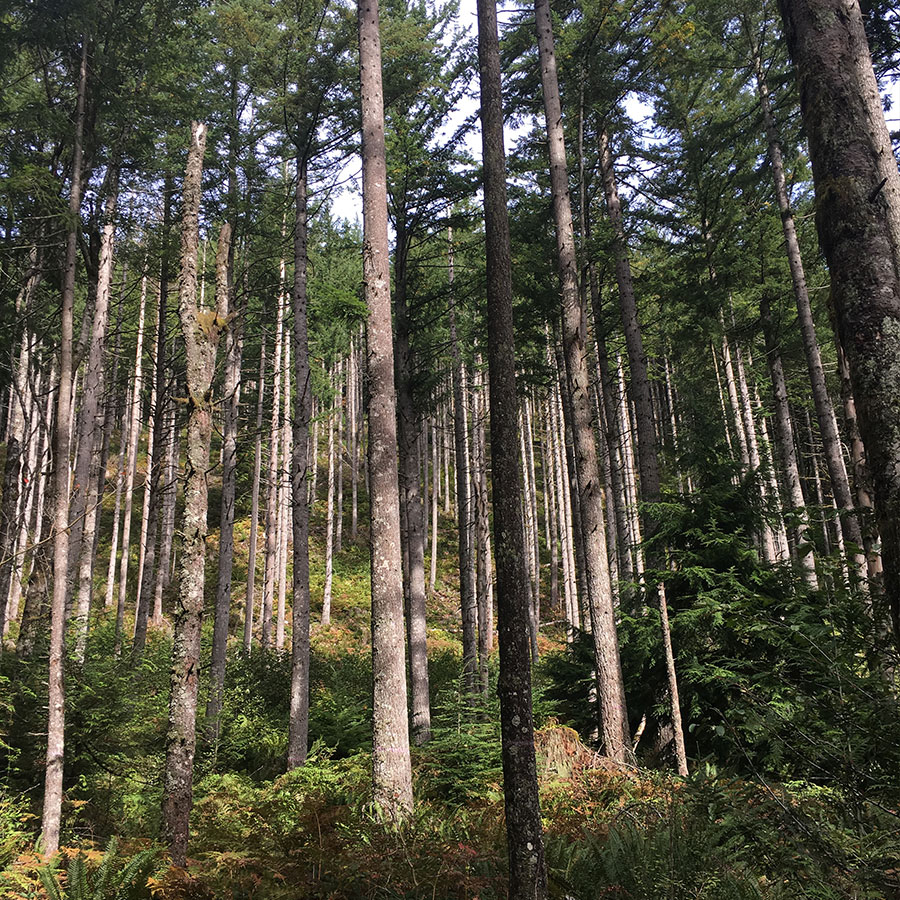
Commercial Thinning
A commercial treatment to reduce the number of trees per acre to improve tree growth. Cut trees are removed from the site and logs are shipped to mills. This type of thinning covers costs and can provide revenue prior to the final harvest of this rotation. This treatment is to provide additional growing space and access to nutrients and water. Typically, trees are selected for cutting based on spacing needs, species, vigor, and existing damage. Though a few of the trees selected to be left are chosen for their benefit as future wildlife trees.
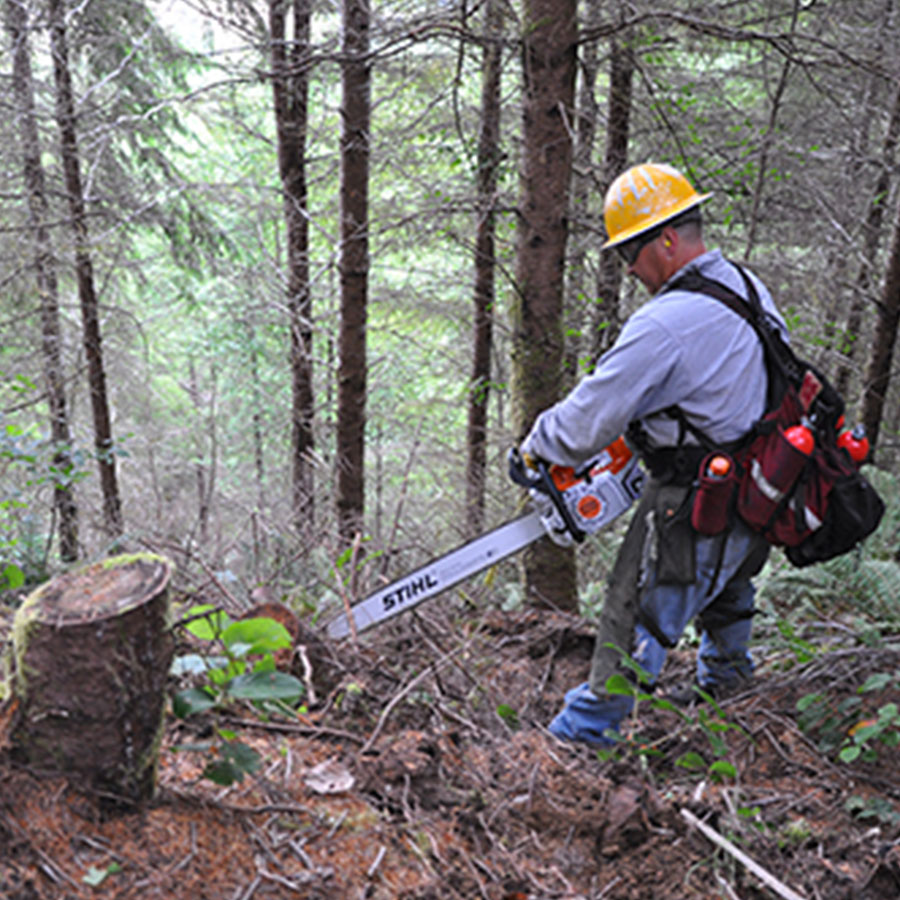
Pre-Commercial Thinning
A non-commercial treatment to reduce the number of trees per acre to improve tree growth. Cut trees are left on site. Similar to tending your garden trees are thinned to assure the remaining trees have adequate growing space and access to nutrients and water. Typically, trees are selected for cutting based on spacing needs, species, vigor, and existing damage.
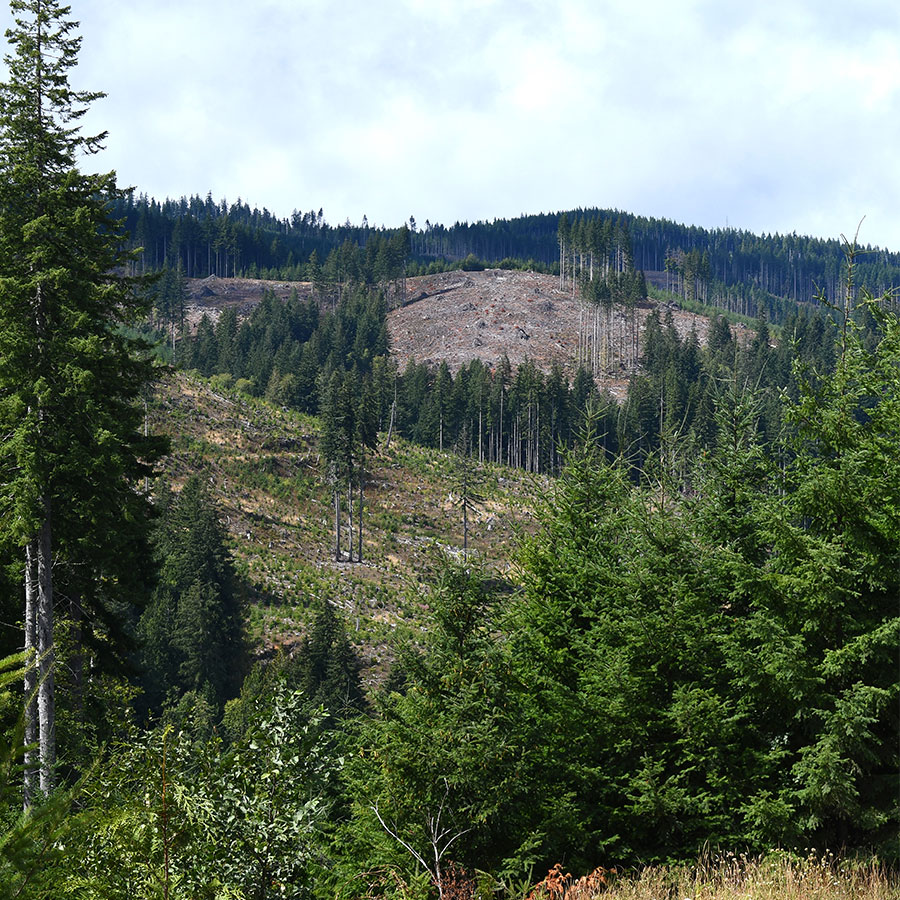
Harvest
Western Washington
- Even Aged versus Uneven Aged — In western Washington stands are typically managed by even aged harvest. An even aged harvest is when all the trees (excluding leave trees and stream buffers) are harvested from a plot of land at the same time. This area is then typically replanted with seedlings that are all the same age. Uneven aged management is typically used in western Washington to achieve certain ecological or habitat goals. Uneven aged management is used to create multiple canopies within a stand to created variability in the size, age, and type of trees growing in that stand. Because Douglas fir is typically the tree of choice for replanting, even aged harvest works best for maximizing the growth of the new stand. Douglas fir does not like to grow in shade, therefore the access to light in an even aged stand benefits the growth of Douglas fir. Other species such as western Hemlock and Red Alder while they tolerate growing in shade, perform better in an even aged stand.
- VRH vs VDT — These two terms are often associated with the even aged and uneven aged management. A VRH or Variable Retention Harvest, most of the trees are removed during harvest. However, leave trees (both clumped and scattered), riparian (streams and wetlands) area buffers, old down wood are left in the harvest unit. Thus, creating a variability in both the removal and retention of trees found in the next rotation stand. In a VDT or Variable Density Thinning, value removal and ecological goals are combined in these treatments. The use of thinning, non-thinning areas (“skips”), and larger openings (“gaps”) are implemented across a management unit to create the desired variability in the remaining stand of trees. These VDT treatments tend to cost more to harvest and return less revenue to the beneficiaries. They are implemented for specific purposes under the State Lands Habitat Conservation Plan.
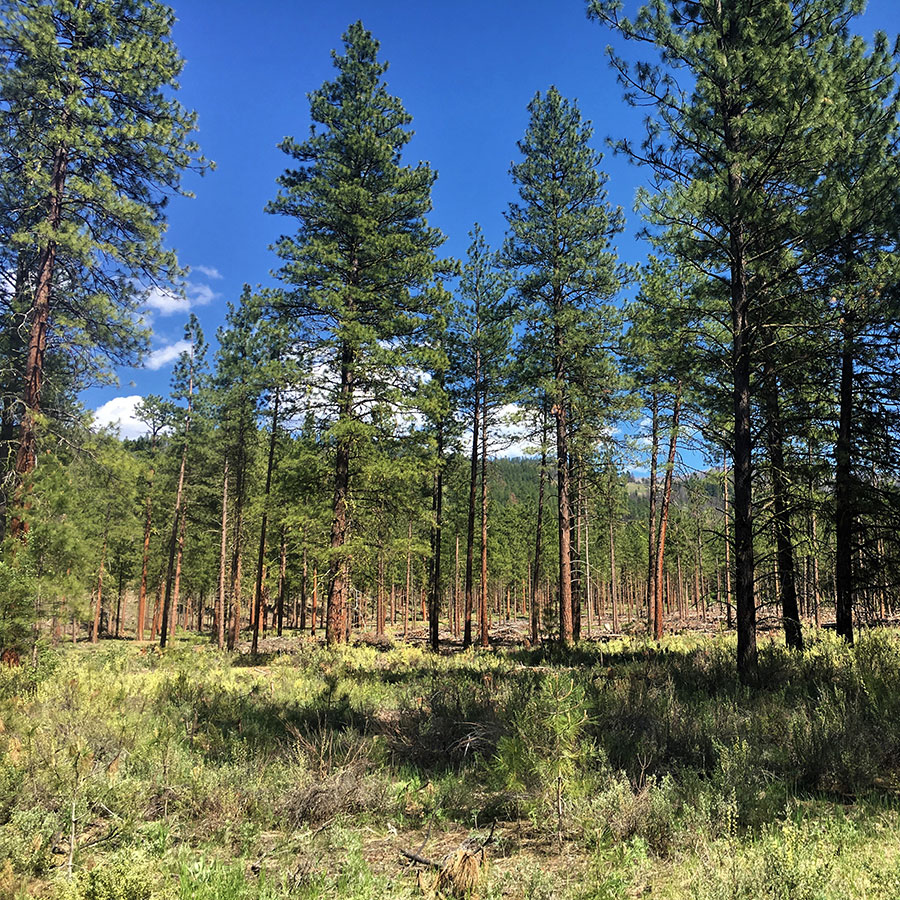
Harvest
Eastern Washington
- Even Aged versus Uneven Aged — In eastern Washington stands are managed by both even aged and uneven aged harvest. An even aged harvest is when all the trees (excluding leave trees) are harvested from a plot of land at the same time. This area is then typically replanted with seedlings that are all the same age. Uneven aged management is when a particular age group of trees in a stand are harvested leaving either an older or younger stand of trees. The remaining stand will typically become the next harvested stand. This stand can also provide a seed source for the next age group of trees and also protection for the new trees regenerating below it.
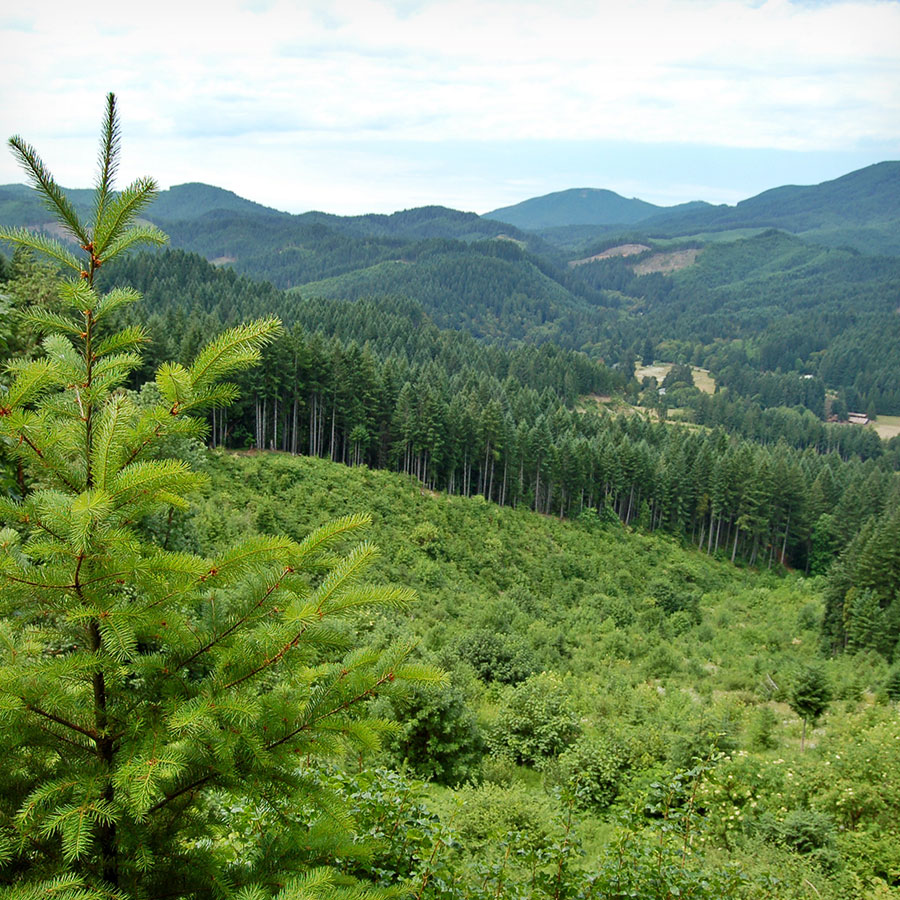
Rotation
The time between planting a new stand and conducting a final (regeneration) harvest.
Cycle of Harvest
The sequence and timing of thinning and regeneration harvest of a stand over the rotation period. In the context of uneven aged management it is a cycle of partial harvest treatments that maintain a level of canopy cover and desired structural composition of the stand. Regeneration in uneven aged management typically occurs in the openings (“gaps”) created within the stand. Though it is not uncommon depending on management goals to regenerate the entire stand at some point in the long-term management of the land.
The Cycle of Harvest Can Be Varied to Meet a Range of Objectives
- Economics — Managing a forest for purely economic objectives is based on maximizing return on investment and on economic efficiency. These concepts account for the shorter harvest rotations (generally under 50 years) practiced on private industrial forests lands. An economic model often seeks to maximize Net Present Value (NPV) based on current and future costs of management and expected revenues.
- Volume — Management that maximizes timber volume output is based on the biological capacity of the forest. Individual site conditions and tree species determine the age at which annual growth will peak. This peak of productivity can be determined. The age of maximum productivity establishes the minimum harvest age to maximize timber volume. On DNR managed trust lands this can range from 80 to 120 years old. As DNR is the manager of a fiduciary trust, pure volume maximization conflicts with the duty to maximize returns to the beneficiaries.
- Complex Forest Conditions — Achieving complex forest conditions takes time. Characteristics associated with large trees and multi layered conditions generally do not develop until a stand is 80 years old and older. Retaining trees at the time of harvest and planting seedlings among them can reduce the time it takes to achieve complex forest conditions in a stand. Intermediate harvest treatments can also create complexity from uniform stand conditions. In many cases actively managed stands create complex forest conditions in shorter time than required for an unmanaged stand.
- Riparian Habitats — Many stands adjacent to streams are younger, denser forests that can benefit from intermediate harvests such as thinning. These benefits include maintaining healthy growth and promoting the development of larger trees that eventually contribute the large woody debris that creates fish habitat within streams. Stands directly adjacent to streams also offer shade that is important to maintaining water temperatures within biologically acceptable ranges. The yield from intermediate harvests within riparian areas declines over time as the younger forest is thinned. Opportunities to provide needed hardwood volume through the use of hardwood conversions benefits both the habitat goals of riparian management and also can generate volume for the market that has high value. Thus, creating a positive revenue stream for the beneficiaries.
DNR uses a blend of these different objectives to meet its trust mandate as well as the requirements set out in the State Lands Habitat Conservation Plan and the Forest Practice Rules.
